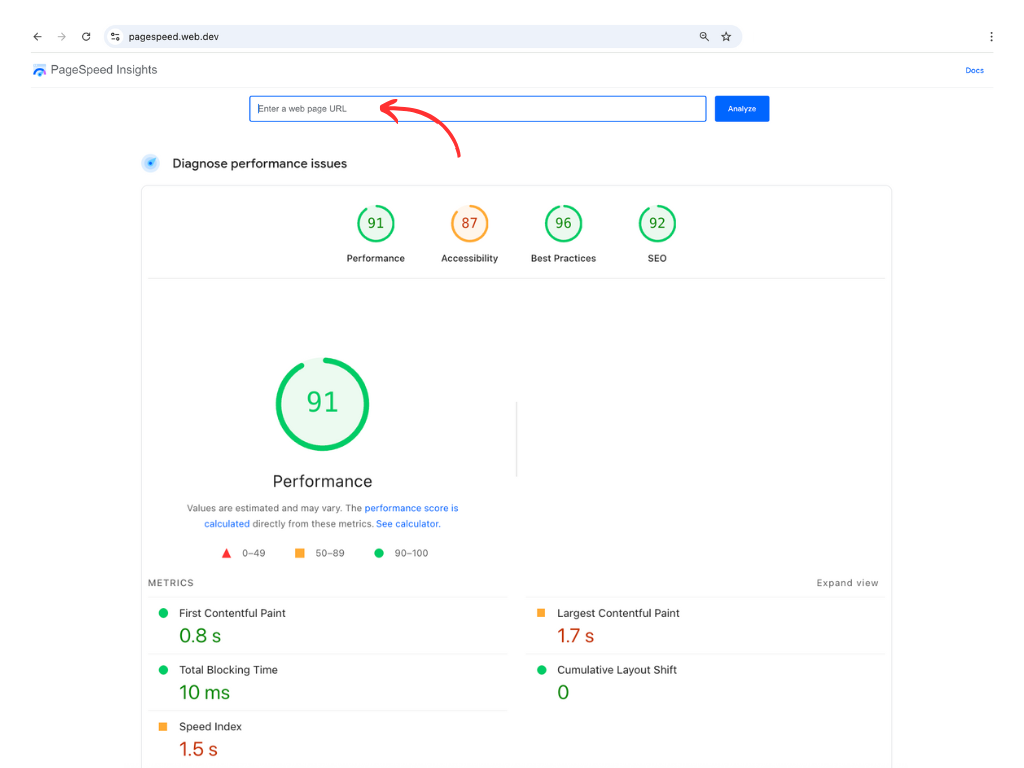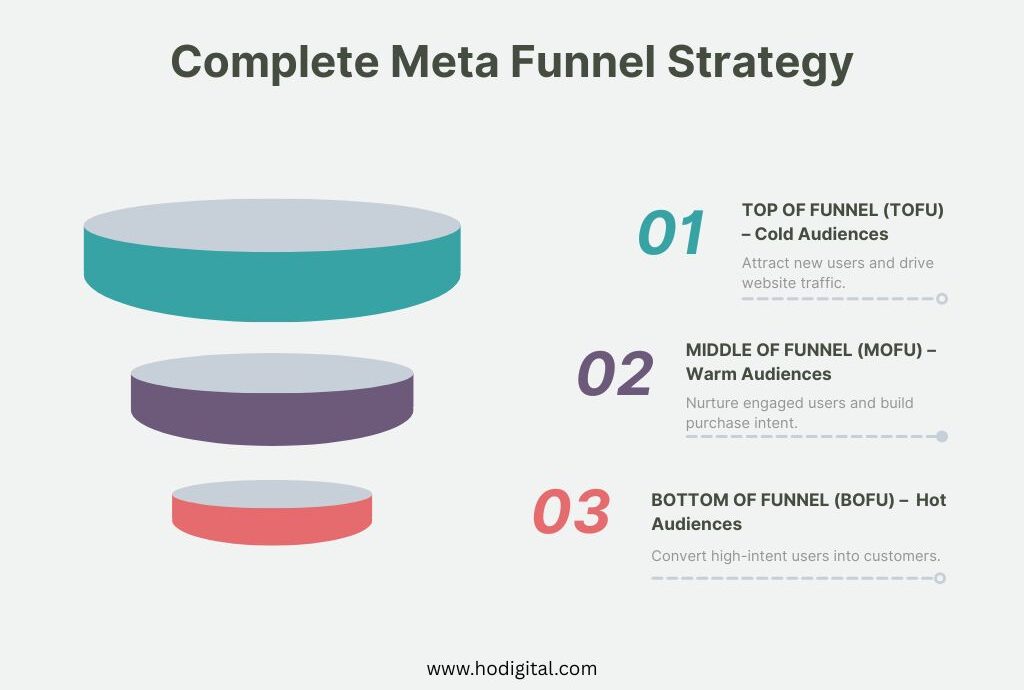Performance Marketing Strategy for perfume business
This plan is structured in three key phases, designed to take your perfume brand from launch to scalable profitability over the first 6-12 months.
Executive Summary: Our approach is data-first. We will begin by establishing a strong tracking foundation, then move to customer acquisition by testing audiences and creative. Finally, we will scale what works and focus on maximizing customer lifetime value. The core principle is to attract, convert, and retain customers profitably.
Phase 1: Foundation & Discovery (Months 1-3)
Objective: To establish a robust tracking infrastructure, gather initial data, identify the core target audience, and test initial campaign hypotheses with a limited budget.
1. Technical & Analytics Setup (The Non-Negotiables):

- Website/Landing Page Optimization:
- Ensure your website is mobile-first and loads in under 3 seconds. Use Google PageSpeed Insights to check your site’s performance.
- Create dedicated landing pages for specific perfume collections or bestsellers.
- Implement clear Call-to-Actions (CTAs) like “Shop Now,” “Discover Your Scent,” or “Get a Sample Kit.”
- High-quality, professional product photography and videography are essential.
- Tracking Implementation: This is the bedrock of performance marketing.
- Meta Pixel (Facebook & Instagram): Install the pixel on every page of your website. Configure standard events:
ViewContent,AddToCart,InitiateCheckout, andPurchase. - Google Ads Tag: Install the global site tag and conversion tracking tags for Google Ads.
- Google Analytics 4 (GA4): Set up GA4 to understand user behavior, traffic sources, and build audiences. Link it with your Google Ads account.
- Meta Pixel (Facebook & Instagram): Install the pixel on every page of your website. Configure standard events:
2. Audience Persona Definition:
Go beyond demographics. Create 2-3 detailed personas. For example:
- Persona A: “The Ambitious Professional” (28-45): Values sophistication, longevity, and a scent that transitions from day to night. Shops at luxury department stores, follows business influencers, reads Forbes.
- Persona B: “The Creative Free Spirit” (22-35): Seeks unique, niche, and ethically sourced scents. Follows indie artists, shops on Etsy, interested in sustainability and wellness.
3. Initial Campaign & Creative Strategy:

- Offer: Launch with a compelling introductory offer. Examples: “15% Off Your First Order,” “Free Sample Kit with Purchase,” or “Free Shipping.”
- Creative Assets: Develop a mix of assets:
- High-End Lifestyle Shots: Models embodying your personas wearing the perfume.
- Product-Focused Shots: Clean, crisp images of the bottle and packaging.
- Short-Form Video (15-30s): Unboxing experiences, application shots, videos evoking a mood (e.g., a coastal breeze for an aquatic scent). User-Generated Content (UGC) style videos perform exceptionally well.
4. Platform & Campaign Setup:
- Meta (Facebook & Instagram):
- Campaign Objective: Conversions, optimized for purchase.
- Audience Targeting (TOFU – Top of Funnel):
- Interest Targeting: Target users interested in competitor brands (e.g., Jo Malone, Le Labo), luxury goods, fashion magazines (Vogue, Harper’s Bazaar), and related interests (e.g., wellness, fine dining).
- Broad Targeting: Allow Meta’s algorithm to find customers. This works surprisingly well once the pixel has data.
- Initial Budget: Allocate 70% of your budget here to fill the funnel.
- Google Search:
- Campaign Type: Search Campaign.
- Keyword Targeting: Focus on high-intent, non-branded keywords.
- Examples: “long-lasting floral perfume,” “best unisex woody scent,” “buy niche perfume online.”
- Branded Campaign: Set up a small campaign for your own brand name to capture direct interest and protect your brand from competitors bidding on your name.
Phase 2: Acquisition & Validation (Months 4-6)
Objective: To aggressively acquire new customers by leveraging data from Phase 1 and to build retargeting pools. We will validate winning ad creatives and audiences.
1. Campaign Structure & Optimization:

- Meta (Full Funnel Approach):
- TOFU (Top of Funnel – Cold Audiences): Continue interest-based targeting, but also introduce Lookalike Audiences (LALs). Create 1% LALs based on:
- Website Visitors
- Video Viewers (those who watched 75%+ of your videos)
- Social Media Engagers (people who liked, commented, or shared your posts)
- MOFU/BOFU (Middle/Bottom of Funnel – Warm/Hot Audiences): Implement retargeting campaigns. This is where your ROI will be highest.
- Segment 1: All Website Visitors (Last 30 days) – General brand recall.
- Segment 2:
ViewContent(Last 14 days) – Show them the specific product they viewed. - Segment 3:
AddToCart/InitiateCheckout(Last 7 days) – This is your hottest audience. Hit them with a strong CTA, a reminder, or a small discount (e.g., free shipping) to close the sale.
- TOFU (Top of Funnel – Cold Audiences): Continue interest-based targeting, but also introduce Lookalike Audiences (LALs). Create 1% LALs based on:
- Google Ads Expansion:
- Shopping Campaigns: If you have an e-commerce store, this is essential. Set up your Google Merchant Center feed. Create a Standard Shopping campaign to have granular control over product bids.
- Performance Max (PMax): Once you have at least 30-50 conversions, launch a PMax campaign. Feed it your best creative assets (images, videos, text) and let Google’s AI find customers across all its properties (YouTube, Display, Search, Discover, Gmail).
2. Creative Testing:
- Systematically test variables:
- Ad Copy: Test long form (storytelling) vs. short form (direct offer).
- Visuals: Test lifestyle images vs. product shots vs. UGC videos.
- Headlines: Test benefit-driven (“A Scent That Lasts All Day”) vs. aspirational (“Embody Confidence”).
- Use A/B testing features within the ad platforms. Cut losing ads after 3-5 days and reallocate budget to winners.
Phase 3: Scaling & Optimization (Months 7-12)
Objective: To drive significant revenue growth by scaling proven campaigns and maximizing Customer Lifetime Value (LTV).
1. Scaling Strategies:
- Vertical Scaling: Gradually increase the budget (by ~20% every 3 days) on your best-performing ad sets (those with a high ROAS).
- Horizontal Scaling: Duplicate your winning ad sets and test them against new Lookalike Audiences (e.g., LALs of Purchasers, LALs of High-Value Purchasers).
2. Advanced Retargeting & Retention:
- Dynamic Product Ads (DPA): Set up a product catalog on Meta. DPAs will automatically show users products they have previously viewed or added to their cart.
- Customer Retention Campaigns:
- Create a custom audience of existing customers.
- Target them with ads for new product launches or cross-sell campaigns (e.g., “Love our ‘Midnight Jasmine’? Try the matching body lotion.”).
- Run a “Replenishment” campaign targeting customers who purchased ~60-90 days ago.
3. Channel Expansion:
- Pinterest: Highly visual platform where users plan purchases. Ideal for targeting based on aesthetics and occasions (e.g., “wedding perfume ideas”).
- YouTube Ads: Use In-Stream ads to tell a deeper story about your brand’s origin or the inspiration behind a scent. Target viewers of competitor reviews or beauty tutorials.
Budgeting & Key Performance Indicators (KPIs)
Budget Allocation (Initial):
- Prospecting (TOFU): 60-70%
- Retargeting (MOFU/BOFU): 30-40%
- As your customer base grows, this will shift to a 50/50 split or even favor retargeting.
Core KPIs to Track:
- Return On Ad Spend (ROAS): The most important metric for e-commerce. ROAS=Cost of Ads÷Revenue from Ads Target: Aim for a blended ROAS of 3.0 or higher (meaning for every $1 spent, you generate $3 in revenue).
- Cost Per Acquisition (CPA) / Cost Per Purchase: How much it costs to acquire one customer. CPA=Number of Purchases Total Ad Spend Target: This should be well below your Average Order Value (AOV).
- Click-Through Rate (CTR): Measures ad creative effectiveness. CTR=(Total Impressions÷Total Clicks)×100% Target: Aim for 1% or higher on Meta, 2-3% or higher on Google Search.
- Conversion Rate (CVR): Measures website/landing page effectiveness. CVR=(Number of Purchases÷Total Clicks)×100% Target: A good e-commerce CVR is typically 1-3%.
Reporting & Optimization Cadence
- Daily: Monitor campaign spending and check for major red flags (e.g., sudden CPA spike).
- Weekly: Analyze performance against KPIs. Optimize by pausing underperforming ads/ad sets and reallocating budget. Review search query reports in Google Ads.
- Monthly: Conduct a deep-dive strategic review. Analyze funnel performance, plan the next month’s creative tests, and adjust budget allocation between platforms and funnel stages.
By following this structured, data-driven plan, your perfume brand will be perfectly positioned to navigate the competitive landscape, acquire customers efficiently, and build a foundation for long-term, profitable growth. Get in touch with HO Digital, Digital marketing agency in Gurgaon, to turn your brand strategy into measurable success.
